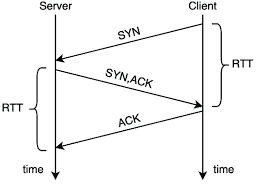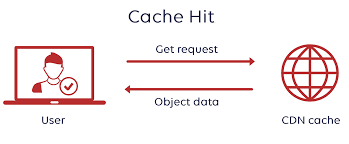A Content Delivery Network (CDN) is a network technology designed to improve webpage loading speeds, optimize user experience, and enhance website availability by replicating and storing content on servers globally. To effectively measure and optimize the performance of a CDN, we need to focus on some key performance indicators.
What are the CDN Performance Metrics?
CDN Performance refers to the efficiency and effectiveness of a Content Delivery Network (CDN) in transmitting and distributing content. This typically includes several vital indicators: Request Latency, Packet Loss Rate, Throughput, Hit Rate, Time to Live (TTL), Bandwidth, Connection Time, etc. These metrics help in evaluating how well a CDN is performing in terms of delivering content to end-users.
Content Delivery Network (CDN) performance metrics mainly include the following aspects:
- Request Latency: This refers to the time it takes from when a user sends a request to when they receive a response. Lower request latency means users can get the content they request faster.
- Packet Loss Rate: This refers to the proportion of data packets lost during transmission. A lower packet loss rate means data can be transmitted more reliably.
- Throughput: This refers to the amount of data the CDN can handle in a unit of time. Higher throughput means the CDN can handle many requests more efficiently.
- Hit Rate: This refers to the proportion of requests for content that are found and successfully returned from the CDN's cache. A higher hit rate means the CDN can effectively provide content from its cache, reducing requests to the origin server and speeding up content delivery.
- Time to Live (TTL): This refers to the time data exists in the network. In a CDN, TTL is typically used to control when content in the cache should be updated or deleted.
- Bandwidth: This refers to the maximum data transfer rate the CDN can provide.
- Connection Time: This refers to the time it takes to establish a connection, including DNS resolution time, TCP connection time, and SSL handshake time.
There are many factors that affect CDN performance, mainly including:
- Distribution of CDN nodes: The geographical location and number of CDN nodes directly affect the speed and efficiency of content transmission. The more nodes and the wider the distribution, the better the performance is usually.
- Network conditions: Factors including network congestion and network stability can affect CDN performance.
- Caching strategy: The caching strategy of a CDN affects the hit rate and the speed of content updates, thereby affecting performance.
- Load balancing: How to effectively distribute traffic among CDN nodes can also affect CDN performance.
- Content type: Different types of content (such as static files, dynamic content, streaming media, etc.) may require different optimization strategies, affecting CDN performance.
- Hardware and software: The hardware configuration and software optimization of CDN nodes can also affect their performance.
What is Round-Trip Time (RTT)?
Round-Trip Time (RTT) refers to the time it takes for a request to be sent and a response to be received. In network communication, RTT measures the total time it takes for a message to travel from the sender to the receiver and back. RTT includes the time it takes for data to be transmitted from the sender to the receiver and the time for the receiver to process the request and send back a response. It is an essential metric for measuring network latency and is typically expressed in milliseconds (ms). Calculating RTT normally involves sending a request from the sender and waiting for the receiver to return a response. The value of RTT can be determined by measuring the time difference between sending the request and receiving the response. RTT is crucial for network performance and user experience. A lower RTT indicates faster data transmission and quicker response times, improving network efficiency and user satisfaction. Optimizing network topology, reducing data transmission distance, selecting faster network paths, and using efficient protocols can help reduce RTT.

What are the Factors that Affect Round-Trip Time?
RTT is an essential indicator of network performance and directly affects the user experience. Here are some key factors that influence RTT:
- Network Distance: Physical distance is a significant factor affecting RTT. Packets must be transmitted between the sender and receiver, so the greater the distance, the higher the RTT.
- Network Congestion: The number of packets in the network can also affect RTT. If there are too many packets in the network, it can lead to network congestion, thereby increasing RTT.
- Network Equipment Performance: The performance of network equipment, such as routers and switches, can also impact RTT. If the equipment performance is poor, it may slow down the processing speed of packets, thereby increasing RTT.
- Packet Size: The size of the packets can also influence RTT. Generally, the larger the packet, the longer the transmission time, increasing RTT.
- Transmission Medium: Different transmission mediums (like fiber optics, copper wires, and wireless) have different transmission speeds, which can also affect RTT.
- Network Protocol: Different network protocols (like TCP, UDP) handle packets in different ways, which can also potentially impact RTT.
How does CDN Improve Round-Trip Time?
CDN can improve Round Trip Time (RTT) by implementing the following measures:
- Edge node deployment: CDN providers typically deploy multiple edge nodes worldwide. These edge nodes are located closer to the users, enabling faster content delivery and reducing RTT.
- Intelligent routing algorithms: CDN can utilize intelligent routing algorithms to select the optimal network path, considering factors such as network topology, latency, and bandwidth. This helps minimize RTT.
- TCP optimization: CDN can employ TCP optimization techniques to reduce RTT. For example, TCP Fast Open (TFO) can reduce the time required for TCP connection establishment, thereby lowering RTT.
- Pre-fetching and preloading: CDN can pre-fetch and preload content on edge nodes, caching content closer to the users. This allows for faster response times and reduced RTT when users request the content.
- Lazy loading and incremental updates: CDN can utilize lazy loading and incremental update techniques to transmit only parts of a page or the updated content rather than the entire page. This reduces data transfer and subsequently lowers RTT.
- Optimizing network connections: CDN providers can collaborate with Internet Service Providers (ISPs) to optimize network connections, reducing latency at intermediate nodes and minimizing RTT.
- Monitoring and optimization: CDN providers monitor and analyze RTT data to assess network performance and make necessary optimizations. By monitoring RTT, they can identify network bottlenecks and high-latency regions, taking appropriate measures to improve CDN performance.
What is Time-to-Live (TTL)?
Time-to-Live (TTL) is a parameter used in computer networks to control the lifespan of data packets. It specifies the maximum amount of time a packet can exist in the network before it is discarded or deleted. TTL is typically measured in seconds and is set and used in the header of IP (Internet Protocol) packets. Each time a packet passes through a router, the router decrements the TTL value by 1. When the TTL reaches 0, the router discards the packet and returns a "Time Exceeded" error message to the source address. The primary purpose of TTL is to prevent data packets from circulating indefinitely in the network, avoiding network congestion and resource wastage. By limiting the lifespan of packets in the network, TTL ensures that packets either reach their destination within a reasonable time or are discarded, thereby maintaining network stability and efficiency. In addition to controlling the lifespan of packets in the IP protocol, TTL can also be used in other network protocols and applications. For example, in the Domain Name System (DNS), TTL is used to specify the caching time for DNS resolution results, controlling how frequently clients query DNS servers.
How does CDN Improve Time-to-Live?
CDN (Content Delivery Network) can improve Time-to-Live (TTL) by implementing the following measures:
- Content caching: CDN reduces requests to the origin server by caching content on its edge nodes. When an edge node receives a request, it can directly serve the cached content without accessing the origin server. This reduces the load on the origin server, decreases latency, and improves TTL.
- Dynamic TTL management: CDN can dynamically manage TTL based on the frequency and importance of content updates. CDN can set shorter TTL for frequently updated content to ensure users receive the latest content promptly. CDN can set longer TTL for less frequent changes in content to reduce requests to the origin server and network traffic.
- Intelligent caching strategies: CDN can employ intelligent caching strategies based on user geography, access patterns, and demands. By caching content on edge nodes closer to users, CDN reduces the distance data packets need to travel, improves response times, and extends TTL.
- Pre-fetching and preloading: CDN can pre-fetch and preload content, caching it on edge nodes in advance. This allows CDN to serve the cached content directly when users request it without waiting for a response from the origin server, reducing latency and improving TTL.
- DNS resolution optimization: CDN can improve TTL by optimizing DNS resolution. By caching DNS resolution results on edge nodes and setting appropriate TTL, CDN reduces frequent queries to DNS servers, improves resolution speed, and lowers TTL.
What is Cache Hit Ratio?
The Cache Hit Ratio refers to the proportion of requested data already present in the cache system. It represents the efficiency and success rate of retrieving data from the cache.
The Cache Hit Ratio can be calculated using the following formula:
Cache Hit Ratio = (Cache Hits / Total Requests) * 100%
Here, Cache Hits refers to the number of times the requested data is found in the cache, and Total Requests refers to the overall number of requests made. A higher Cache Hit Ratio indicates that more requests are being served from the cache without accessing the original data source (such as a database or remote server). This can significantly improve system performance and response times while reducing the load on the original data source. The Cache Hit Ratio is influenced by various factors, including cache size, cache policies, data access patterns, and data update frequency. By optimizing cache policies, appropriately sizing the cache, and monitoring the Cache Hit Ratio, the efficiency and performance of the cache system can be improved.

How does CDN Improve the Cache Hit Ratio?
CDN (Content Delivery Network) can improve the cache hit ratio by implementing the following measures:
- Static content caching: CDN caches static content such as images, CSS, and JavaScript files on its edge nodes to improve the cache hit ratio. When users request these static contents, CDN can serve them directly from the edge nodes without accessing the origin server, increasing the hit ratio.
- Dynamic content caching: In addition to static content, CDN can also cache dynamic content, such as dynamically generated web pages or API responses. CDN can dynamically manage cache policies based on the frequency and importance of content updates to improve the cache hit ratio for dynamic content.
- Intelligent caching strategies: CDN can employ intelligent caching strategies based on user geography, access patterns, and demands. CDN reduces the distance data packets need to travel by caching content on edge nodes closer to users, thereby improving the hit ratio.
- Pre-fetching and preloading: CDN can pre-fetch and preload content, caching it on edge nodes in advance. This allows CDN to serve the cached content directly when users request it without waiting for a response from the origin server. This reduces latency and improves the cache hit ratio.
- Cache policy optimization: CDN can optimize cache policies based on different types of content and access patterns. For example, CDN can use longer cache times and larger cache space for popular content to improve the hit ratio.
Conclusion
CDN performance metrics are key indicators used to measure the effectiveness and efficiency of a Content Delivery Network (CDN). Some of the most important CDN performance metrics include: Round-Trip Time (RTT), Time-to-Live (TTL), Cache Hit Ratio, etc. Monitoring these metrics helps organizations optimize their CDN performance, improve user experience, and ensure efficient content delivery.
Tencent EdgeOne excels in CDN performance, offering a range of features designed to optimize content delivery and enhance user experience. Leveraging Tencent's extensive global network, EdgeOne ensures low latency and high throughput, enabling rapid content delivery to users worldwide. The platform boasts a high cache hit ratio, reducing the load on origin servers and improving response times. Additionally, Tencent EdgeOne provides real-time monitoring and analytics, allowing for proactive performance management and quick resolution of any issues. These capabilities make Tencent EdgeOne a powerful solution for delivering fast, reliable, and efficient content to a global audience.
We have now launched a Free Trial, welcome to Contact Us for more information.

